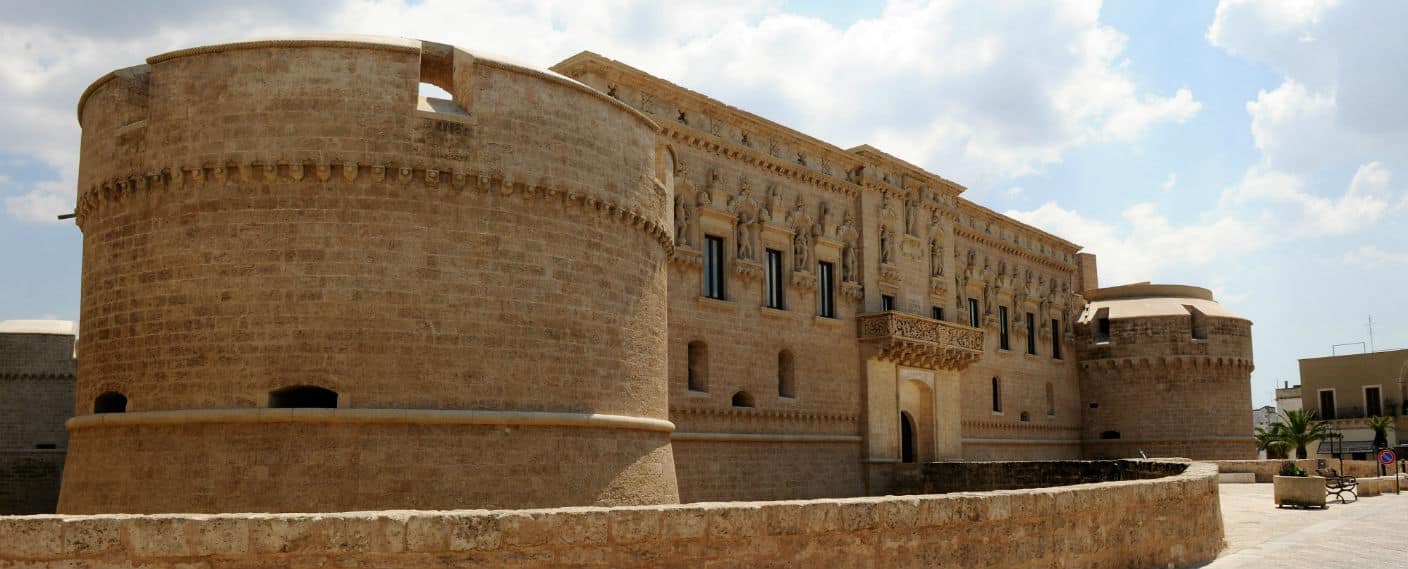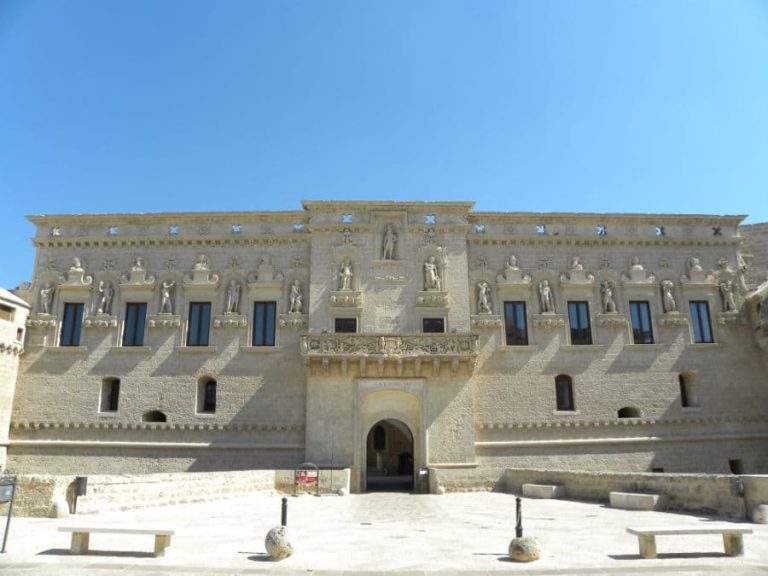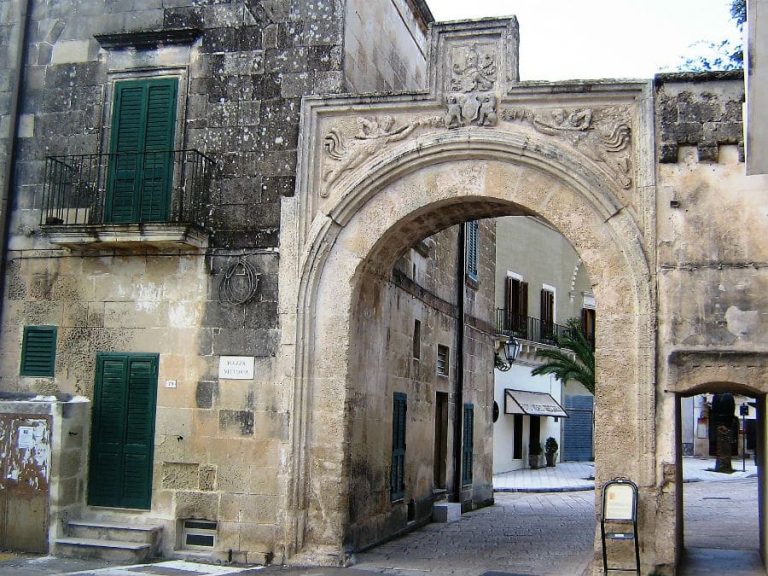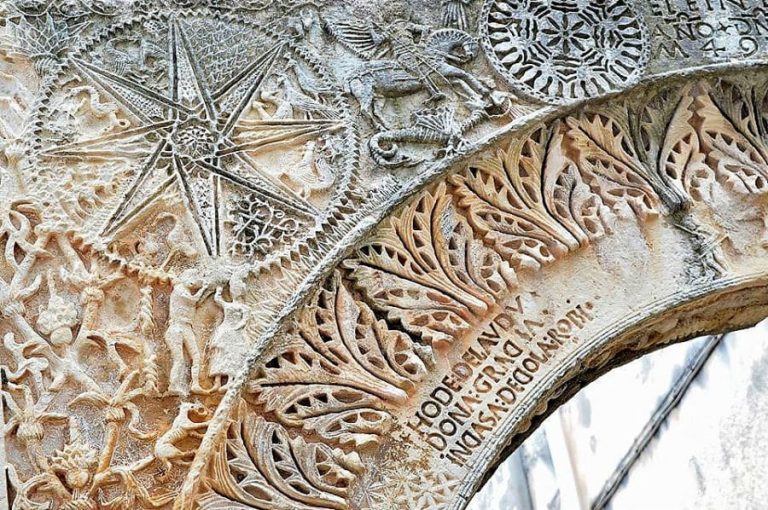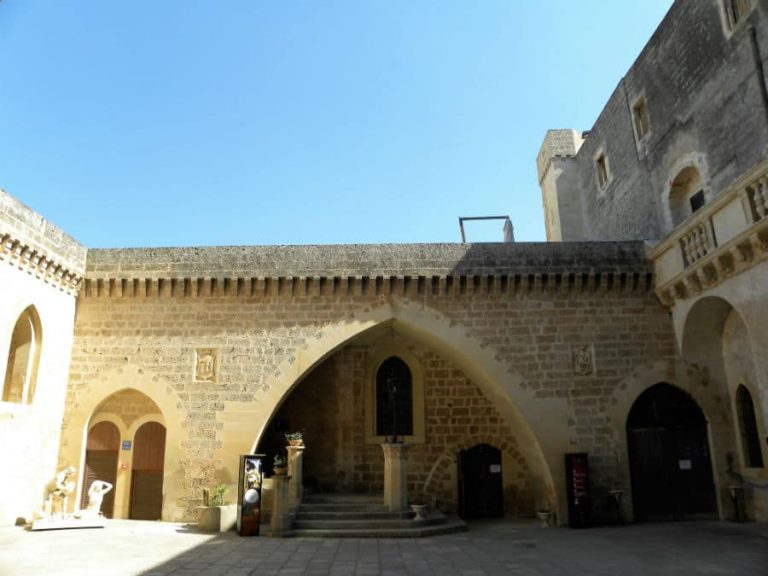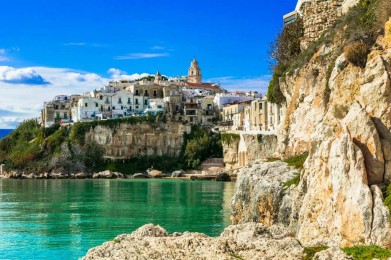In the beating heart of Salento, not far from the most renowned beaches, lies Corigliano d'Otranto, a village that proudly guards a unique identity: that of Grecìa Salentina, a linguistic island where Griko, a very ancient language of Greek derivation, is still spoken and handed down. To walk through the streets of Corigliano is to enter into a continuous dialogue between past and present, between solemn architecture and linguistic memories, brought alive also thanks to multilingual panels - Italian, English and Griko - accompanied by poems recited by local inhabitants.
The undisputed symbol of the village is the imposing De' Monti Castle, scenically placed at the entrance to the historic center. Of medieval origins, it was transformed in the 16th century into a sumptuous noble residence at the behest of Duke Francesco Trane. The Baroque facade is a sculptural masterpiece, adorned with allegorical figures, philosophers, artists and virtues carved in stone to celebrate strength and wisdom. Today, the castle is a living, multifunctional place: it hosts cultural events, exhibitions, guided tours, ceremonies, as well as a restaurant and cafeteria.
Next to the manor house is the Caporta, the town's ancient South Gate, surmounted by the civic coat of arms and heraldic coat of arms of Giovan Battista de' Monti, the feudal lord who initiated the fortification of the entire town in the 16th century. It is the ideal entrance to a historic center dense with courtyard houses, stately palaces and inscriptions carved in stone, witnesses to the pride and wealth of local families, who in pre-digital times entrusted facades with the task of communicating values and thoughts.
Standing out among the architectural gems is the Chiesa Matrice di San Nicola Vescovo, built in the 16th century and renovated in 1622. The exterior preserves a 1573 portal surmounted by a lunette with statues of the Redeemer, the Virgin and St. Nicholas of Myra, while inside is a floor mosaic depicting the Tree of Life, a clear reference to the famous work of St. Pantaleon in Otranto Cathedral. The bell tower, which was originally a lookout tower, bears a thousandth engraved in Greek characters, dated 1465 (year 6973 according to the Byzantine calendar).
Among the most evocative corners, the Lucchetti Arch deserves a slow stop: a masterpiece of Renaissance art, it is decorated with a dense interweaving of Byzantine, classical and Islamic motifs, and tells in stone a poignant story of love and fidelity, almost an eternal message carved at the entrance to an ancient home.
There is no shortage of typical flavors that make the village a tasty stop: the white truffle of Corigliano stands out, surprising in quality and aroma, and the curious popaneddha, a sweet cucumber eaten in summer as fresh fruit or in salads.
The village particularly comes alive in the summer months with major events, such as the first stage of the Notte della Taranta in August and the SEI Festival in July, which attract artists, musicians and travelers seeking authentic experiences.
Corigliano d'Otranto, known in Griko as Χωριάνα (Koriàna), is more than a town: it is a Salento time capsule, where Greek roots coexist with contemporary vitality, and where every stone tells a story.

